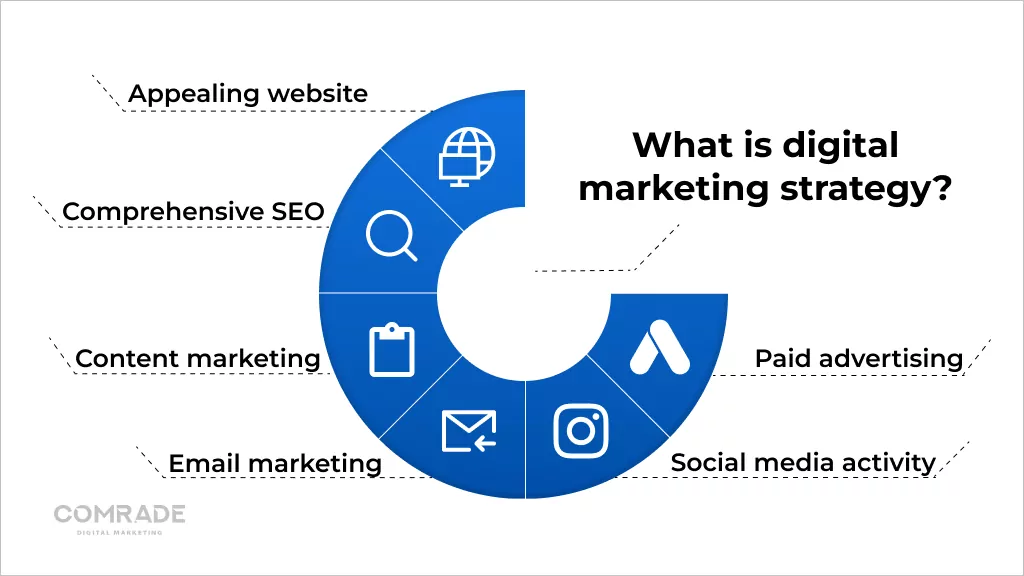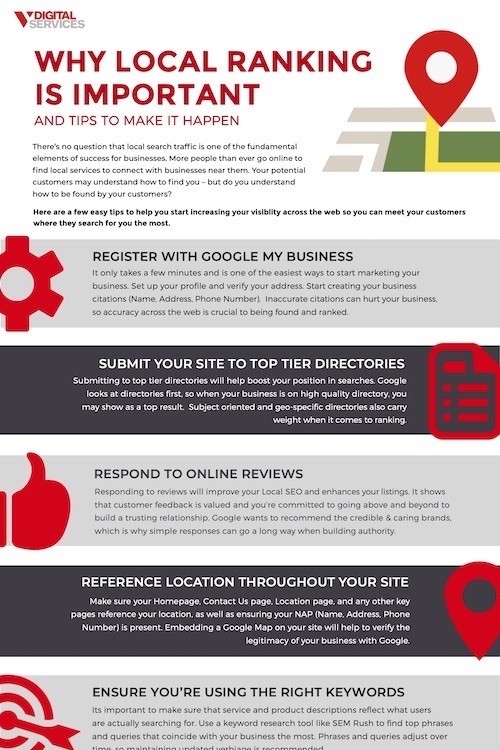Unlock the secrets to successful local online marketing with these must-know strategies for reaching and engaging your target audience.

Image courtesy of via DALL-E 3
Table of Contents
- Introduction to Local Online Marketing
- Setting Up a Google My Business Profile
- Leveraging Social Media
- Using Local SEO
- Creating a User-Friendly Website
- Harnessing the Power of Online Reviews
- Email Marketing for Local Businesses
- Tracking Your Marketing Efforts
- Summary and Key Takeaways
- Frequently Asked Questions (FAQs)
Introduction to Local Online Marketing
Local online marketing is a crucial aspect of promoting small businesses in today’s digital world. With the power of the internet at our fingertips, businesses can now reach their local customers more effectively than ever before. In this section, we will explore what local online marketing is all about and why it matters for small businesses looking to thrive in the digital age.
What is Local Online Marketing?
Local online marketing is the use of internet marketing strategies to promote a business to its local community. It involves leveraging online tools and platforms to reach potential customers in the same geographical area as the business. This could include tactics such as optimizing a website for local search, setting up a Google My Business profile, engaging with customers on social media, and more.
Why It Matters
For small businesses, local online marketing is essential for several reasons. Firstly, it helps businesses connect with their target audience in a more targeted and personalized manner. By reaching out to local customers online, businesses can increase their visibility and attract more foot traffic to their physical locations. Additionally, local online marketing can help businesses build trust and credibility within their community, leading to long-term customer relationships and loyalty.
Setting Up a Google My Business Profile
Setting up a Google My Business profile is a crucial step in letting customers find your business online. To get started, go to the Google My Business website and click on the “Manage Now” button. You will need to sign in with your Google account or create one if you don’t have one yet.
Once you’re logged in, enter your business name and address. Make sure to provide accurate information to help customers locate your business easily. You can also add your phone number, website URL, and business category to give customers more details about your business.
After entering your business information, Google will verify your business through a postcard sent to your address. Once you receive the postcard and verify your business, your Google My Business profile will be live, and customers will be able to find you on Google Maps and search results.
Optimizing Your Profile
Now that your Google My Business profile is set up, it’s essential to optimize it for better visibility in local searches. Start by uploading high-quality photos of your business, such as your logo, interior, exterior, and products/services you offer. Visual content can attract more customers and make your profile stand out.
Next, write a compelling business description that highlights what makes your business unique. Use relevant keywords that customers might use to search for businesses like yours. This will improve your chances of appearing in local search results when customers look for products or services similar to yours.
Don’t forget to regularly update your business information, such as hours of operation, special promotions, and any changes to your services. By keeping your profile up-to-date and engaging with customer reviews, you can build trust with potential customers and improve your online reputation.
Leveraging Social Media
Social media can be a powerful tool for businesses to connect with their local community. When deciding which platforms to use, it’s important to consider where your target audience spends their time. Platforms like Facebook and Instagram are popular choices for engaging with local customers.

Image courtesy of www.linkedin.com via Google Images
Creating Engaging Content
Engaging content is key to capturing the attention of your audience on social media. Make sure your posts are visually appealing and provide valuable information to your followers. This could be showcasing your products or services, sharing customer testimonials, or offering promotions exclusive to your social media followers.
Using Local SEO
Local SEO, or search engine optimization, is like a treasure map that helps people find your business online. When someone searches for a specific service or product in their area, local SEO ensures that your business shows up on their screen. It’s like waving a flag saying, “I’m here! Come check me out!”
Best Practices for Local SEO
Now that you know what local SEO is, let’s talk about how to make it work for you. Here are some simple tips to improve your local SEO and make sure customers can find you:
1. Use keywords that are related to your business and location in your website content. For example, if you’re a bakery in Los Angeles, use phrases like “best cakes in Los Angeles” on your website.
2. Make sure your business information, like your address and phone number, is accurate and consistent across all online platforms. This helps search engines trust that you’re a legitimate and reliable business.
3. Encourage customers to leave positive reviews about your business. Search engines value customer feedback, and positive reviews can boost your visibility in local search results.
4. Create a Google My Business account and keep it updated with recent photos, reviews, and business hours. This helps Google show your business in local search results and on Google Maps.
By following these best practices, you can improve your local SEO and increase your chances of being discovered by local customers online.
Creating a User-Friendly Website
When it comes to creating a website for your business, it’s crucial to keep your users in mind. A user-friendly website is easy to navigate, visually appealing, and provides valuable information to visitors. Think about what your customers would want to see when they land on your site. Make sure to organize your content logically, with clear menus and easy-to-find contact information.

Image courtesy of www.brandedagency.com via Google Images
Mobile Optimization
In today’s digital age, more and more people are using their smartphones and tablets to browse the internet. This means that your website needs to be optimized for mobile devices. A mobile-friendly website will adjust its layout to fit different screen sizes, ensuring that users have a seamless experience no matter what device they’re using. By making your website mobile-friendly, you’ll not only improve user experience but also boost your site’s search engine rankings.
Harnessing the Power of Online Reviews
Online reviews can make a big difference in the success of your business. They are like digital word-of-mouth recommendations that can help attract new customers and build trust. Learning how to manage online reviews effectively can be a game-changer for your business.
Getting Positive Reviews
One of the best ways to get positive reviews is to provide excellent customer service. When your customers are happy with their experience, they are more likely to leave a positive review. You can also politely ask satisfied customers to leave a review on platforms like Google, Yelp, or Facebook. By making it easy for them to leave feedback, you increase the chances of receiving glowing reviews.
Responding to Reviews
Responding to reviews, both positive and negative, is crucial for your online reputation. When you receive a positive review, take the time to thank the customer for their kind words. This shows that you value their feedback and appreciate their business. For negative reviews, it’s important to respond professionally and address any concerns the customer may have. By showing that you care about resolving issues, you can turn a negative experience into a positive one.
Email Marketing for Local Businesses
When it comes to reaching out to your local customers and keeping them engaged, email marketing is a powerful tool for small businesses. By sending newsletters and updates directly to their inbox, you can build relationships, promote your products or services, and drive sales. Let’s dive into the basics of email marketing for local businesses.

Image courtesy of comradeweb.com via Google Images
Building an Email List
Before you can start sending out engaging emails, you need to have a list of email addresses to send them to. One easy way to gather email addresses from your customers is to have a sign-up form on your website or social media pages. You can also collect email addresses in-store by asking customers to sign up for your newsletter. Remember to always ask for permission before adding someone to your email list.
Creating Engaging Newsletters
Once you have your email list ready, it’s time to start creating engaging newsletters that your customers will want to read. Make sure your emails are visually appealing and easy to read. Personalize the content to make it relevant to your audience. You can include promotions, updates on new products or services, helpful tips, or even customer success stories. Keep your emails concise and to the point to keep your readers interested.
Tracking Your Marketing Efforts
In order to know if your local online marketing strategies are working, it’s essential to track your efforts. By analyzing the data and metrics, you can understand what is successful and what needs improvement.
Using Website Analytics
Website analytics are tools that help you track and measure the performance of your website. One popular tool is Google Analytics, which provides valuable insights into your website’s traffic, user behavior, and conversions. By analyzing this data, you can see which pages are most popular, where your visitors are coming from, and how long they are staying on your site.
Analyzing Social Media Metrics
Social media platforms also offer analytics tools that allow you to track the performance of your posts and engagement with your audience. You can see how many likes, comments, shares, and clicks your posts are receiving, as well as demographic information about your followers. By analyzing this data, you can determine which types of content are resonating with your audience and adjust your strategy accordingly.
Summary and Key Takeaways
In this article, we have discussed essential strategies for success in local online marketing. Local online marketing is crucial for small businesses as it helps them reach customers in their local area through the internet. Setting up a Google My Business profile, leveraging social media, using local SEO, creating a user-friendly website, harnessing the power of online reviews, utilizing email marketing, and tracking marketing efforts are some key strategies discussed.

Image courtesy of www.vdigitalservices.com via Google Images
Setting up a Google My Business profile is important as it helps businesses appear in local searches on Google. Leveraging social media platforms like Facebook and Instagram can help businesses engage with their local audience effectively. Local SEO plays a significant role in helping businesses rank higher in local searches and attract more customers.
Having a user-friendly website that is mobile-optimized is crucial in today’s digital age. Online reviews can make or break a business, so it’s essential to encourage positive reviews and respond professionally to all feedback. Email marketing is a great way to stay connected with customers and build long-lasting relationships.
Tracking your marketing efforts through website analytics and social media metrics is vital to understanding what strategies are working best for your business. By implementing these strategies, businesses can boost their online presence and attract more local customers.
Final Thoughts
As you embark on your local online marketing journey, remember to apply the strategies discussed in this article. By setting up a Google My Business profile, engaging on social media, optimizing your website, leveraging online reviews, using email marketing, and tracking your efforts, you can position your business for success in the digital world. Stay consistent, be patient, and watch your business grow with the power of local online marketing!
Want to turn these SEO insights into real results? Seorocket is an all-in-one AI SEO solution that uses the power of AI to analyze your competition and craft high-ranking content.
Seorocket offers a suite of powerful tools, including a Keyword Researcher to find the most profitable keywords, an AI Writer to generate unique and Google-friendly content, and an Automatic Publisher to schedule and publish your content directly to your website. Plus, you’ll get real-time performance tracking so you can see exactly what’s working and make adjustments as needed.
Stop just reading about SEO – take action with Seorocket and skyrocket your search rankings today. Sign up for a free trial and see the difference Seorocket can make for your website!
Frequently Asked Questions (FAQs)
How Long Does It Take to See Results?
When implementing local online marketing strategies, it’s essential to be patient. The time frame for seeing results can vary depending on the specific tactics you are using. Some strategies, such as setting up a Google My Business profile or optimizing your website for local SEO, may show quicker results within a few weeks to a couple of months. On the other hand, building a strong social media presence and gathering positive online reviews may take a bit longer to see significant impact, possibly several months to a year. Remember, consistency is key in local online marketing, so keep at it, and you will see the results over time.
Do I Need to Spend a Lot of Money?
One of the great things about local online marketing is that it can be cost-effective, especially for small businesses. While some strategies may require a budget for tools or advertising, many tactics can be implemented with minimal to no cost. For example, setting up a Google My Business profile is free, and engaging with customers on social media can be done organically without needing to spend money on ads. By focusing on creating valuable content, building relationships with your audience, and leveraging online reviews, you can effectively promote your business without breaking the bank.
What If I’m Not Good with Computers?
Not to worry! You don’t have to be a tech genius to succeed in local online marketing. Many platforms and tools are designed to be user-friendly and intuitive, making it easier for beginners to navigate. If you’re not comfortable with computers, consider taking advantage of tutorials, online courses, or even hiring a digital marketing expert to help you get started. Remember, the goal of local online marketing is to connect with your local community and attract customers, so focus on creating genuine and engaging content that resonates with your audience, regardless of your computer skills.







